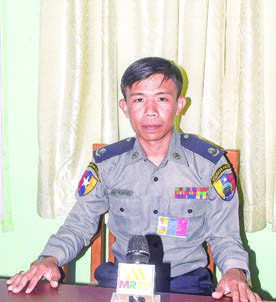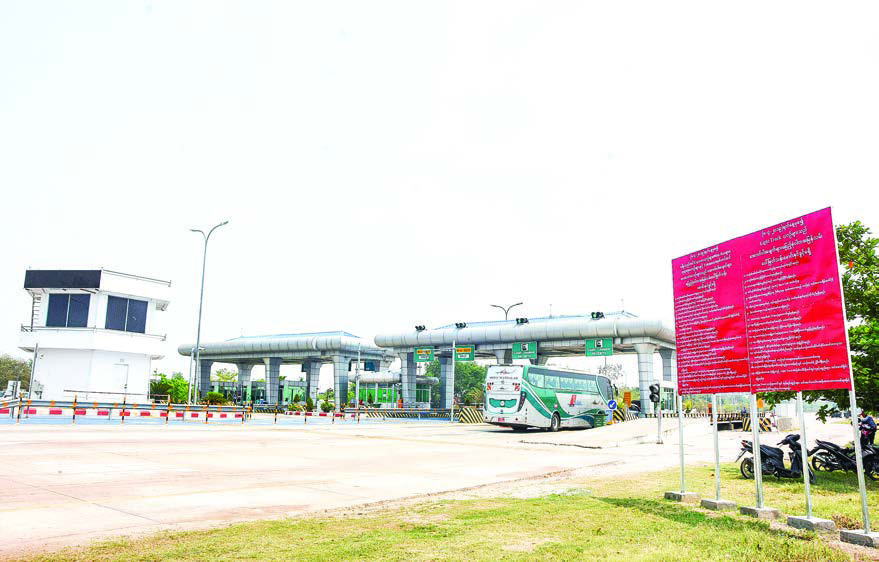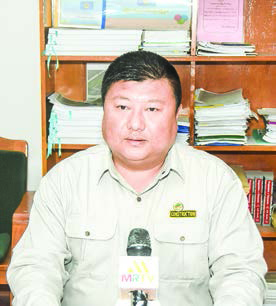THE Joint Monitoring of Highway Buses and Trucks has released a series of rules for vehicles to follow on the Yangon-Mandalay highway.
The following is an interview with U Soe Naing Oo, Assistant Director (Civil) of the Highway Preservation and Administration Group, and Police Major Zarni Maung, Myanmar Highway Police Force, regarding the issued set of rules and future tasks.
U Soe Naing Oo
Q: Can you tell us the reason for issuing rules vehicles must follow on the Yangon-Mandalay highway?
A: We want to reduce traffic accidents minimize casualties on the highway. There is a set of 20 rules for express cars, minibuses, vehicles carrying pilgrims, and vehicles with the telematic system. Light trucks have to follow their own set of 18 rules.
Q: When will you assess if people are following these rules of not? How will you spread this to the wider public?
A: The joint groups will begin assessing if the rules are followed beginning from 8 April 2019, at least three times a week. The first month will be conducted as an awareness raising month. We will begin taking action in the months to follow. We have included these rules in the state newspapers and put them up on toll gates in order to reach a large number of the public as possible. We’ve sent the rules to nearest bus lines and the toll gates with send handouts to vehicles.
Q: How many traffic accidents have occurred throughout the years and what are the numbers for 2019?
A: There were 745 accidents on the Yangon-Mandalay highway in 2016, 555 in 2017, 473 in 2018, and 135 in 2019 as of March.
Q: What does the telematic system do and how can installing it benefit us?
A: The telematic system is mostly installed on cargo trucks that carry perishable materials like vegetables, meat, fish, and flowers. Some express vehicles have it too but all vehicles travelling on the highway should have it installed.
Telematics allows monitoring of location, movements, status and behaviour of a vehicle in real time and will also show its history. We can see if the vehicle is going over the speed limit or driving roughly and an alarm will warn the drive in the vehicle. Daily and monthly records of the registered vehicles can be viewed. Plus, if an accident occurs then we can review from the black box.
Owners of vehicles can use mobile applications to manage their vehicles and the traffic command and control center can contact drivers not following the rules, and drivers can press the panic button in case of emergencies.
Q: Which organizations will be incorporated in the joint group?
A: The Highway Police Force will be mainly in charge. Other personnel will be added from the Road Transport Administration Department, the Business License and Transport Management Department, the Highway Preservation and Management Group, the Highway Fire Services Department, and the Highway Red Cross Society.
Q: Can you explain how the rules you’ve published are suitable for bus lines and drivers?
A: Both list of rules detail facts that all vehicles should have and they are capable of being followed by bus lines and drivers. Everyone must follow these rules to avoid traffic accidents.
Q: What are the main causes of traffic accidents on the highway?
A: The greatest causes of accidents are vehicles that flip over from overspeeding, drivers falling asleep at the wheel, and tyre bursts. Currently family cars have the highest accident rates so we need to make a separate case for them.
Q: How many vehicles travel every day on the highway?
A: The highway sees an average of 4,500 to 5,000 vehicles every day. We published these rules to make it safer for travellers on the highway. We urge vehicles to cooperate with us to be accident free.

Police Major Zarni Maung
Q: We hear the joint group will begin checking the sturdiness of vehicles travelling on the highway starting from 8 April. Could you explain about that process?
A: We will designate three checkpoints on the Yangon-Mandalay highway to examine vehicles. One will be at No.3 junction toll gate, one at Nay Pyi Taw toll gate, and another at Sagar Inn toll gate. We will carry examinations once in the morning and once in the evening. We aim to perform this routine at least three days a week.
Q: When you examine a vehicle, how long would the process take? What will you do to ensure travellers are not delayed too long and what will become of vehicles not adhering to the rules?
A: We will assign different groups on various shifts to make the examinations as quick and smooth as possible. If the vehicles do not meet the designated rules of criteria then we won’t allow them on to the highway.
Q: In what other ways does the highway police help travellers?
A: We help transport people to hospitals when accidents occur. We try to quickly reach vehicles that have malfunctioned, have a burst tyre, or ran out of gas. We use modern speed checkers and take action against vehicles so that they drive within the speed limit. We also use alcohol testers to check for drunk drivers. There are five toll gates where we check if people are wearing seatbelts and educate them on its importance. We also check if the fire extinguishers on cars are still functioning.
There are many villages along the highway so the police force conduct awareness training to prevent accidents with motorcycles, wandering cattle and other animals.
Q: We understand that most of the accidents on the highway are due to human error. How much vehicle faultiness has been behind accidents?
A: We separate traffic accidents into four categories: human, vehicle, road, and weather. In 2018, 367 accidents were caused by human error, 98 by vehicles, 9 due to the state of the road, and no causes by the weather. We can see human errors are the greatest cause for traffic accidents.
Overspeeding is the primary culprit for accidents. That’s why we use speed checkers and alcohol testers and we see the number of accidents gradually going down year by year. As we begin examining vehicles for their sturdiness and preparedness for the highway, I’m sure traffic accidents will further decrease. (Translated by Zaw Htet Oo)




